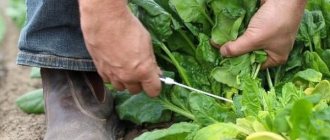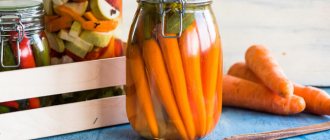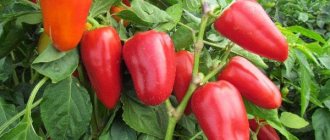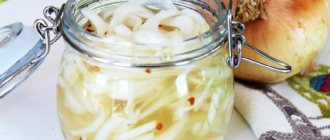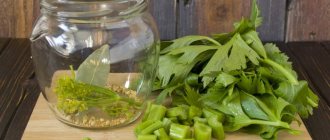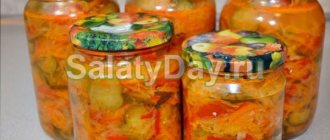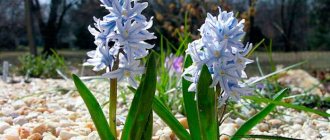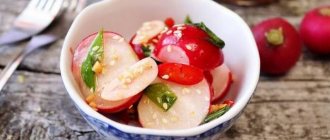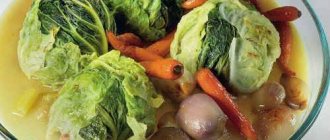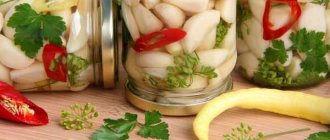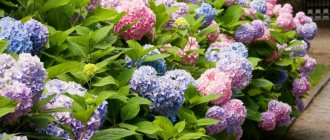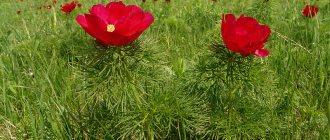What are the differences?
There are certain signs by which beans and beans are distinguished:
- By geographical location. Those plants that we call beans came from the Mediterranean countries. The historical homeland of beans is Latin America.
- According to the shape of the plant. Beans are most often a climbing plant, although there are bush varieties. The beans have a bush form.
- According to the shape of the seeds. In beans, they are more rounded and smooth, and the beans are slightly flattened.
- Based on the percentage of proteins, carbohydrates and fat. Beans are rightly considered an alternative to animal sources of protein. There is much less of this substance in beans.
- By use. Beans have two additional functions: they are used as livestock feed, and when they bloom, they are an excellent honey plant.
- On the use of traditional medicine. The fruits, pods and flowers of beans have medicinal properties; in beans, only the leaves of the pod can boast of this.
A little misconception
The confusion stems from a misunderstanding of the term "beans". In science, this is the name given to the fruits themselves, which are found in the pods of plants of the legume family. In addition, this term includes the bean fruit, as well as the plant itself of this family.
Beans are a genus of plants that are part of the legume family.
So what about the huge number of varieties called beans? Yes, indeed, although there is no scientific classification, in fact we can say that such a variety exists.
Compound
Bean and lentil seeds have a fairly diverse composition.
| Vitamins | Beans, mg | Lentils, mg |
| Vitamin A, RE | 0,005 | |
| Beta carotene | 0,01 | 0,03 |
| Vitamin B1 | 0,5 | 0,5 |
| Vitamin B2 | 0,18 | 0,21 |
| Vitamin B4 | 96,7 | 96,4 |
| Vitamin B5 | 1,2 | 1,2 |
| Vitamin B6 | 0,9 | 0,54 |
| Vitamin B9 | 0,09 | 0,09 |
| Vitamin C | 4,5 | 4,4 |
| Vitamin E | 0,6 | 0,5 |
| Vitamin H | 0,0005 | 0,0003 |
| Vitamin K | 0,006 | 0,005 |
| Vitamin PP | 6,4 | 5,5 |
| Niacin | 2,1 | 1,8 |
| Macronutrients | Beans | Lentils |
| Potassium | 1100 | 672 |
| Calcium | 1100 | 83 |
| Silicon | 92 | 80 |
| Magnesium | 103 | 80 |
| Sodium | 40 | 55 |
| Sulfur | 159 | 163 |
| Phosphorus | 480 | 390 |
| Chlorine | 58 | 75 |
| Microelements | Beans, mcg | Lentils, mcg |
| Aluminum | 640 | 170 |
| Bor | 490 | 610 |
| Vanadium | 190 | 25,2 |
| Iron | 5900 | 1180 |
| Iodine | 12,1 | 3,5 |
| Cobalt | 18,7 | 11,6 |
| Lithium | 2 | 74,8 |
| Manganese | 1340 | 1190 |
| Copper | 580 | 660 |
| Molybdenum | 39,4 | 77,5 |
| Nickel | 173,2 | 161 |
| Rubidium | 43,5 | 27 |
| Selenium | 24,9 | 19,6 |
| Strontium | 15 | 15 |
| Titanium | 150 | 300 |
| Fluorine | 44 | 25 |
| Chromium | 10 | 10,8 |
| Zinc | 3210 | 2420 |
| Zirconium | 16,2 | 2,9 |
Did you know? As of 2021, the world leader in lentil production is Canada (3,234,000 tons per year).
| The nutritional value | Beans | Lentils |
| Squirrels | 21 g | 24 g |
| Fats | 2 g | 1.5 g |
| Carbohydrates | 47 g | 46.3 g |
| Alimentary fiber | 12.4 g | 11.5 g |
| Water | 14 g | 14 g |
| Calories | 298 kcal | 295 kcal |
Benefit
The beneficial properties of the seeds are due to the rich composition of legumes.
- Beans:
Helps with heart rhythm disorders. Copper stimulates the synthesis of hemoglobin and adrenaline. Zinc improves metabolic processes and digestion processes. Saturates the body with fiber. Prevents the formation of tartar. Eliminates inflammatory processes in the liver. Accelerates the dissolution of kidney stones and gall bladder. Increases potency and has a beneficial effect on the genitourinary system. Regulates cholesterol and blood sugar levels. It is an antidepressant. Rejuvenates and nourishes the skin.
- Lentils:
- Normalizes metabolic processes.
- Improves the functioning of the gastrointestinal tract.
- Cleanses the intestines.
- Relieves pain during menstruation.
- Stimulates skin regeneration.
- Slows down the aging process.
- Removes toxins from the body.
- It is a preventative against cancer.
- Regulates blood sugar levels.
- Promotes weight loss.
- Improves vascular tone.
Harmful qualities
Plants also have harmful properties associated with their contraindications.
- Beans:
- Can cause bloating if not well soaked.
- Raw beans can cause poisoning.
- It can create heaviness in the stomach, as it takes about 4 hours to digest.
- Not recommended for people with gout, gastritis, ulcers, high acidity, colitis, cholecystitis.
Important! Beans are not recommended for elderly people, and lentils should not be consumed so as not to impair the absorption of nutrients.
- Lentils:
- Causes flatulence, fermentation in the stomach, creates a feeling of heaviness.
- Provokes the formation of kidney stones.
- It can create heaviness in the stomach, as it takes about 4 hours to digest.
- Not recommended for people with gout, uric acid diathesis, problems with joints and the genitourinary system.
Difference from peas
Peas, like beans and lentils, are rich in vitamins A, B1, B6, C. They contain a lot of fiber and a minimum of fat, which allows you to quickly feel full. Peas are a source of vegetable protein, therefore, like other beans described in the article, they can easily replace meat.
At the same time, the absorption of such protein will occur faster and less harm will be done to the body. There is no significant difference in beneficial and harmful properties between peas and other legumes. There are minor differences in composition (in the amount of a certain element).
Contraindications
For culinary purposes, bean seeds and pods that have undergone heat treatment are used. However, with weakened intestinal microflora, even boiled beans cause gas formation, bloating and heaviness in the abdomen. To neutralize the side effects, beans are consumed with fresh herbs, and fennel or dill seeds are added to the water where the fruits are boiled.
Beans are excluded from the menu for the following diseases:
- jade;
- gastritis;
- colitis;
- gout;
- stomach ulcer;
- acute pancreatitis;
- increased acidity of gastric juice;
- cholecystitis.
In addition, pregnant women, young children and the elderly should not consume beans.
Remember, consuming fresh fruits of the plant is strictly prohibited, since they contain toxic substances.
Where do beans grow?
The homeland of this plant is considered to be the Mediterranean, but it is also successfully grown in more northern regions. In Russia for a long time it was one of the main agricultural crops. But over time, it was replaced by potatoes and beans as more productive and faster ripening plants.
Today, the main attention to vegetable beans is shown by owners of summer cottages and personal plots. Few are grown on an industrial scale.
But every year the agricultural area under this crop is gradually increasing.
Russian beans grow in different climatic conditions, and there are also zoned varieties for colder climates. The best temperature for fruit setting is considered to be +25°C; at higher temperatures they do not ripen and the ovaries fall off.
Comparative characteristics
To understand the difference between beans and beans, it is necessary to consider their comparative characteristics. First of all, the presented cultures differ in their region of origin. Beans originated on our continent, and common beans came to us from overseas.
Beans are not only a food crop, but also a forage crop. Beans grow in the form of a bush. Most curl. The fruits of this crop are used by humans for food purposes.
The fruits, flowers and leaves of beans are used for medicinal purposes. This is an excellent honey plant. In beans, only the leaves differ in their medicinal properties. The beans also have a more irregular shape. The beans are oval, smooth. The beans have a flattened shape.
Thus, we found out that bean is a common name for the fruit of a whole family of plants and at the same time an independent crop. It is distinguished from beans by its appearance, taste, and methods of use.
Medium size with a dark red shell. It is also called “kidney beans” - its shape really resembles a kidney. Red beans cannot be sprouted - raw beans contain toxic substances. Before cooking, they need to be soaked for at least 8 hours, drained, and then cooked until tender: 50-60 minutes. Red beans are often used in Creole and Mexican cuisine, particularly in chili con carne.
Another Central and South American favorite is black beans.
. They are small beans with a black outer shell and a creamy white interior that are slightly sweet, mealy and crumbly in taste. They need to be soaked for 6-7 hours and then boiled for 1 hour. They are cooked with lots of onion, garlic and cayenne pepper or used in the famous Mexican black bean and corned beef soup.
Lima beans
, or lima, originally from the Andes.
It has large, flat, kidney-shaped beans that are most often white, but can be black, red, orange, or spotted. For its pleasant oily taste, it is also called “butter” (batter) and for some reason Madagascar. Lima beans need to be soaked for a long time - at least 12 hours, and then boiled for at least 1 hour. Lima beans are very good in thick tomato soups with lots of dried herbs. baby lima beans
for just a couple of hours.
Black eye beans
- one of the types of cowpeas, cowpeas. It has medium-sized white beans with a black eye in the side and a very fresh taste. It is most popular in Africa, where it comes from, as well as in the southern United States and Persia. It is soaked for 6-7 hours and then boiled for 30-40 minutes. In the South American states, a dish called “Hoppin' John” is made from these beans for the New Year: the beans are mixed with pork, fried onions, garlic, tomatoes and rice, seasoned with thyme and basil. For Americans, these beans symbolize financial wealth.
Motley
- The most common bean in the world.
It comes in different varieties. Pinto
beans are medium-sized, oval-shaped, pink-brown, with a speck that “blurs” when cooked.
Cranberry
and
Borlotti
also have a pinkish-red speck, but the background is creamy and the taste is more delicate. All these varieties need to be soaked for 8-10 hours and cooked for an hour and a half. It is most often eaten whole in soups or fried, mashed and fried again with spices.
White beans
(there are several varieties) – medium-sized beans. They have a neutral flavor and creamy texture, making them a versatile bean that is a favorite in Mediterranean cuisine. In Italy, cannellini beans, long, thin beans, are pureed and added to thick herbed potato soups. Cannellini is placed in pasta e fagioli - pasta with beans. White beans are soaked for at least 8 hours and boiled for 40 minutes to 1.5 hours.
Azuki
(aka angular beans) are small oval beans in a red-brown shell with a white stripe. Their homeland is China, and thanks to their sweetish taste, desserts are made from them in Asia, first soaked for 3-4 hours and then boiled with sugar for half an hour. In Japan, adzuki with rice is a traditional New Year's treat. Sometimes sold as a prepared paste.
Beans and beans: what's the difference?
How beans differ from beans for the average person is primarily the shape of the fruit: the beans are oval-round, the beans are slightly flattened.
There are also differences in the appearance of plants: beans are most often a vine, beans are a bush plant, although some varieties require support; the first one has trifoliate leaves, the second one has pinnate leaves.
On a note! Based on the shape of the leaves, beans can be confused with peas, but the latter has large stipules and tendrils with which it clings to the support. The stipules of beans are medium in size, their edges are jagged, and there are no tendrils.
Other differences between crops are their geographical origin, the content of carbohydrates, proteins, and fats. Beans are considered a more valuable crop in practical use, because they contain more protein; traditional medicine uses flowers, pods, and the fruits themselves as raw materials. In beans, only the leaves of the pods have healing properties.
Conditions for growing beans
The plant’s homeland is Mediterranean countries; it thrives in the climatic conditions of Russia:
- For germination, a temperature of +3-4°C is sufficient, and therefore it is sown immediately after the snow melts;
- strong young plants are insensitive to short-term frosts down to −4°;
- optimal development temperature 18-20°C;
- They belong to long-day plants, for which they choose a place for the beds that is maximally illuminated by the sun;
- capable of producing good yields on poor soils;
- Although they are moisture-loving, they should be watered moderately before flowering.
On a note! Typically, bean fruits reach technical ripeness by mid-July. Gardeners in the southern regions manage to get two harvests per season—in place of the broken pods, young promising shoots appear after a short period of time.
Conditions for growing beans
Beans brought to Europe from South America require heat:
- sowing begins when the soil warms up at a depth of 10 cm to +14°C;
- it is often sown in the second wave after early crops;
- the plant requires good lighting, but daylight hours should not exceed 12 hours;
- Regular watering is required throughout the growing season.
Interesting! According to some data, the seeds of this crop remain viable for several centuries.
What is the difference between beans and beans: important details
The differences between them are not limited to the appearance and agricultural technology of cultivating crops. There are a number of differences in chemical composition.
Nutritional value per 100 g
| Compound | Boiled beans | Boiled grain beans | Boiled green beans |
| Proteins, g | 7.6 | 8.2 | 1.9 |
| Fats, g | 0.4 | 0.62 | 0.28 |
| Carbohydrates, g | 19.7 | 26 | 7.9 |
| Water, g | 71.5 | 63.8 | 89.2 |
| Ash, g | 0.8 | 1.3 | 0.73 |
| Sugar, g | 1.8 | 0.4 | 3.6 |
| Fiber, g | 5.4 | 10.5 | 3.2 |
| Starch, g | – | 15.4 | – |
| Calorie content, kcal | 110 | 140 | 35 |
Note! The nutritional value of legumes depends on the variety. Chemical composition:
Chemical composition:
| Compound | Beans | Beans |
| Vitamin A, mcg/g | 1 | 4.3 |
| Vitamin B1, mcg/g | 3.8 | 4.6 |
| Vitamin B2, mcg/g | 2.4 | 1.6 |
| Vitamin B3 (niacin), mcg/g | 21 | 20.8 |
| Vitamin B6, mcg/g | – | 2.8 |
| Vitamin C, mcg/g | 160 | – |
The fruits of both plants contain vitamins E, K, and beta-carotene.
There is some difference in the mineral composition of beans and legumes, quantitative and qualitative. The fruits of the latter contain rare but important elements molybdenum, manganese, cobalt, zinc (they are absent in beans).
Ripe bean pods
Culinary use
The difference is minimal. Ripe fruits, pre-soaked, and green pods are eaten. They are equally useful for adults, children, young or elderly people, men and women.
There are also no fundamental differences in cooking methods. In recipes, the fruits of both crops are interchangeable, unless we are talking about specific national dishes. The methods of preparing for the winter are the same - drying the grains, freezing or canning the pods.
Important! Some varieties of both plants contain bitterness in the shells of the green pods, so they are soaked in cold water for several hours before cooking.
What is the difference between beans and legumes - 2021 - news
The main difference between beans and legumes is that beans are a type of edible seed in the genus Phaseolus, whereas legumes are seeds grown in pods. Additionally, beans are a type of legume that belongs to the Fabaceae family. Additionally, other types of legumes include alfalfa, chickpeas, peas, lentils, peanuts, etc.
Beans and legumes are two types of seeds belonging to the legume family. They are an excellent source of vegetarian protein and a better meat substitute. In addition, they are rich in fiber and B vitamins.
Key areas covered
1. What are beans – Definition, features, meaning 2. What are beans – Definition, features, meaning 3. What are the similarities between beans and beans – Brief description of the common features 4. What is the difference between beans and beans – Comparison of the main differences
What kind of beans
Beans are the bud seeds of plants belonging to the genus Phaseolus. They grow inside pods. Therefore, they are a type of legume.
Generally, beans are a type of summer crop that require warm temperatures to grow. From the moment of planting, harvesting takes 55-60 days.
The bean pod turns yellow as it ripens, while the seeds inside it change color from green to mature.
Additionally, the most common types of beans are black beans, black-eyed peas, cannellini beans, kidney beans, Lima beans, pinto beans, navy beans, green beans, etc. Moreover, beans are rich in complex carbohydrates, proteins, folate, iron and soluble fiber.
What legumes
Legumes are a type of vegetables including beans, peas, lentils, chickpeas, alfalfa, peanuts, soybeans, etc. They are the seeds of legume plants.
These legumes have two significant features: the growth of seeds inside the pods and the formation of root nodes that promote the growth of nitrogen-fixing bacteria.
Therefore, legumes reduce the need for nitrogen-containing fertilizers for annual crops in the field.
Additionally, legumes are one of the most versatile and nutritious foods. They generally contain little fat and no cholesterol. However, legumes are rich in proteins and carbohydrates. Therefore, they are a healthy substitute for meat, which contains more fat and cholesterol. They also contain both soluble and insoluble fiber.
Similarities Between Beans and Beans
- Beans and legumes are two types of seeds that are produced in pods.
- They have root nodes within which nitrogen-fixing bacteria grow.
- Moreover, they belong to the legume family.
- In addition, both are rich in protein, fiber and vitamin B.
- Thus, humans and animals use them for food.
Definition
Bean refers to the edible seed, usually bud-shaped, growing in long pods on certain legume plants, while legume refers to the fruit or seeds of leguminous plants (such as peas or beans) used as food. Thus, this is the main difference between beans and legumes.
Significance
Beans are one type of legume, while other types of legumes are alfalfa, clover, peas, chickpeas, lentils, mesquite, carob, soybeans, peanuts and tamarind.
Beans
Additionally, another difference between beans and legumes is that beans grow in long pods, and the length of the pod depends on the type of legume.
form
Moreover, their shape is also an important difference between beans and legumes. Generally, beans are kidney-shaped, while legumes have different shapes.
Conclusion
Beans are a type of legume with a specific bud shape. Dried beans are used as legumes. In comparison, legumes are seeds grown in pods. Other types of beans are chickpeas, peas, lentils, alfalfa, etc. Both beans and legumes are rich in protein, fiber, and vitamin B. However, the main difference between beans and legumes is their relationship.
Links:
1. Fletcher, Jenna. "The 6 Healthiest Beans: Benefits and Nutrients." Medical News Today, MediLexicon International, available here. 2. Lee, Matthew. "List of legume products." Healthy eating | SF Gate, December 12, 2021, available here.
Image credit:
1. “Kidney Beans” by Sanjay Acharya – Own work (CC BY-SA 3.0) via Commons Wikimedia 2. “Various Legumes” by Keith Weller, Agricultural Research Service, USDA (Public Domain), via Commons Wikimedia
Variety of varieties
Not many varieties of the vegetable are known, despite the fact that our ancient ancestors have been growing it since time immemorial. Bean varieties are divided depending on the period of fruit ripening into the following groups:
- Early (60-65 days pass from the appearance of sprouts to the harvest of the first pods).
- Mid-early (65–75 days).
- Mid-season (70–90 days).
- Late - about 100 days.
A conditional classification of beans is also common, based on the breeding directions for growing the crop. There are two types of varieties:
- Northern. The peculiarities of this species are the early maturity of plants and ease of care. Varieties are intended for regions with low temperatures in summer.
- Breeders recommend cultivating the Western European class of varieties in the southern and central regions of the country, where the climate is hotter.
The difference between beans and beans
- The homeland of beans is the Mediterranean. The common bean originates from Latin America.
- Common beans are a bush plant. Most varieties of beans are climbing plants.
- Bean seeds have a rather irregular shape, they are flatter than bean seeds.
- Beans contain slightly less calories and fat, but more protein, fiber and enzymes important for the human body.
- Beans, unlike beans, are not only a food crop, but also a forage crop, as well as an excellent honey plant.
- Flowers, fruits and bean leaves are used for medicinal purposes. In beans, only the leaves have these properties.
https://thedifference.ru
Medium size with a dark red shell. It is also called “kidney beans” - its shape really resembles a kidney. Red beans cannot be sprouted - raw beans contain toxic substances. Before cooking, they need to be soaked for at least 8 hours, drained, and then cooked until tender: 50-60 minutes. Red beans are often used in Creole and Mexican cuisine, particularly in chili con carne.
Another Central and South American favorite is black beans.
. They are small beans with a black outer shell and a creamy white interior that are slightly sweet, mealy and crumbly in taste. They need to be soaked for 6-7 hours and then boiled for 1 hour. They are cooked with lots of onion, garlic and cayenne pepper or used in the famous Mexican black bean and corned beef soup.
Lima beans
, or lima, originally from the Andes.
It has large, flat, kidney-shaped beans that are most often white, but can be black, red, orange, or spotted. For its pleasant oily taste, it is also called “butter” (batter) and for some reason Madagascar. Lima beans need to be soaked for a long time - at least 12 hours, and then boiled for at least 1 hour. Lima beans are very good in thick tomato soups with lots of dried herbs. baby lima beans
for just a couple of hours.
Black eye beans
- one of the types of cowpeas, cowpeas. It has medium-sized white beans with a black eye in the side and a very fresh taste. It is most popular in Africa, where it comes from, as well as in the southern United States and Persia. It is soaked for 6-7 hours and then boiled for 30-40 minutes. In the South American states, a dish called “Hoppin' John” is made from these beans for the New Year: the beans are mixed with pork, fried onions, garlic, tomatoes and rice, seasoned with thyme and basil. For Americans, these beans symbolize financial wealth.
Motley
- The most common bean in the world.
It comes in different varieties. Pinto
beans are medium-sized, oval-shaped, pink-brown, with a speck that “blurs” when cooked.
Cranberry
and
Borlotti
also have a pinkish-red speck, but the background is creamy and the taste is more delicate. All these varieties need to be soaked for 8-10 hours and cooked for an hour and a half. It is most often eaten whole in soups or fried, mashed and fried again with spices.
White beans
(there are several varieties) – medium-sized beans. They have a neutral flavor and creamy texture, making them a versatile bean that is a favorite in Mediterranean cuisine. In Italy, cannellini beans, long, thin beans, are pureed and added to thick herbed potato soups. Cannellini is placed in pasta e fagioli - pasta with beans. White beans are soaked for at least 8 hours and boiled for 40 minutes to 1.5 hours.
Azuki
(aka angular beans) are small oval beans in a red-brown shell with a white stripe. Their homeland is China, and thanks to their sweetish taste, desserts are made from them in Asia, first soaked for 3-4 hours and then boiled with sugar for half an hour. In Japan, adzuki with rice is a traditional New Year's treat. Sometimes sold as a prepared paste.
What are beans - a vegetable or a fruit? Botanical description of the culture
The debate about whether beans are a vegetable or a fruit still continues. For a complete understanding, you need to dig into the botanical description.
From this point of view, the plant is herbaceous, annual or perennial. Belongs to the culture type Fabaceae or Leguminosae. Plants of this type produce seeds and fruits inside the pod. The culture contains an incredible amount of useful substances; for such uniqueness, it is often classified as a separate group of nutritious foods.
People often choose whether beans are a vegetable or not based on their own judgment, but it is generally accepted to classify them as a vegetable .
- The stem can be straight, curly, up to 3 meters tall. As a rule, with sparse hairs on it;
- The leaves are green, pinnate, trifoliate, located on long petioles;
Low growing bush bean
Climbing beans
- Flowers come in different colors, for example, purple, white, lilac, pink, dark purple and others. They are collected in axillary racemes, about one and a half centimeters long, self-pollinating;
- The fruit of annual or perennial beans is pods up to 20 cm long, inside which 2-8 seeds are formed. The shape of beans can be very diverse: curved, straight, convex, flattened. Size from 0.5 to 1.5 cm. Colors: green, dark purple, variegated, speckled, yellow and many others.
What types of beans are there in terms of taste and purpose:
- Sugar beans (asparagus) do not have a parchment layer inside them, so you can eat them together with the pod;
- The semi-sugar parchment layer is not too dense or forms late;
- broad beans;
- Hulling (grain) is not worth eating with the shell, it is grown for grains.
Still, it is fair to note that from a botanical point of view, beans are beans rather than a vegetable or fruit.
Types of beans
- Garden bean
. When eating garden beans, remember that the skin of the pod has a bitter taste. To neutralize the bitterness, just soak the pods in water overnight. This secret is known and used by all housewives in order to significantly reduce the cooking time of beans and beans. For diarrhea, you can make juice from such beans; boiled beans are used for swelling as a diuretic. - Black soybeans
. In addition to excellent taste (tender, sweetish fruits), beans are also used in the treatment of many ailments. Thus, to improve kidney function and for rheumatism (pain in the joints, knees, elbows), it is often enough to introduce a small amount of boiled beans into the daily diet. It would be better if these beans become an ingredient in a tasty and healthy dish. - Black beans
. Such beans are a panacea for diseases of the male reproductive system. They have a beneficial effect on sperm quality and improve the reproductive function of men.
As a result of the article, we can conclude that beans and beans are different in appearance, but similar in their taste and beneficial qualities. Therefore, legumes have rightfully won their worthy place in the food industry. Legumes are not picky to grow, but they are generally heat-loving plants.
The ancient Incas and Aztecs were the first to grow this plant, and the ancient Greeks and Romans used it not only for cooking, but also for medicinal purposes. The product is native to South America, and Columbus brought it to Europe. What are we talking about? Of course, about beans, one of the most popular crops of the legume family. Today, scientists have identified over 250 varieties of the plant, and MedAboutMe will introduce you to the 10 “most, most” unusual varieties of beans.
Beans are a tasty and nutritious product, rich in valuable substances. This is a real record holder for the content of vitamins and microelements, amino acids. In terms of easily digestible protein content, this type of legume can compete with chicken meat. This is why vegetarians and athletes love the plant so much.
Beans are a must in a healthy diet. After all, it’s so easy to prepare delicious, satisfying and healthy dishes from it. Soups, salads, side dishes, snacks and even baked goods - the product will fit well into the menu of people with any taste preferences.
It is recommended to consume the plant analogue of meat regularly - at least 3 cups of boiled beans per week. The product is useful for certain diseases of the kidneys, liver, bladder, diseases of the gastrointestinal tract, and heart failure. Beans reduce the risk of cancer formation and have a beneficial effect on the condition of the skin. It is also an excellent antidepressant and diuretic. This type of legume should not be included in the diet only if there are contraindications: nephritis, gastritis, gout, cholecystitis, pancreatitis, colitis, ulcer.
To cook beans, you need to pre-soak the beans. It is advisable to keep them in water for at least 8 hours. But this rule does not apply to all varieties. For example, green beans can be cooked without soaking.
By eating only 100 g of boiled beans per day, you protect the cardiovascular system from the appearance and development of diseases. This is because the product contains large amounts of potassium. This type of legume also has a positive effect on the nervous system.
A crop from the legume family is classified according to a number of characteristics. The main ones are the shape of the plants, the size of the seeds, the taste and structure of the beans. So, the shape of beans can be climbing, semi-climbing or climbing, bush. And according to the size of the seeds - large-, medium-, small-seeded.
Based on taste and structure, there are three main types of plants:
- Peeling.
- Asparagus or sugar.
- Semi-sugar.
Bean varieties also differ in the color of the seeds and leaves, and the nature of the color (variegated or plain). There are perennial and annual plant varieties. But scientists divide all the diversity of crop types into two main groups - Phaseolus L or American and Vigna Savi or Asian. As the name suggests, they differ in geographic distribution. And in Russia, American varieties of beans are the most popular. Their distinctive features are large beans with a characteristic shape and short pods. While Asian varieties have small seeds and long pods.
Benefits for humans
The main purpose of plants of this family is their use as a food product. Therefore, it is worth considering in more detail their composition, as well as the benefits for the body.
Beans
This plant has undeniable benefits. Regular consumption of beans has the following positive aspects:
- Slightly inferior to beans, it still occupies a leading position in vegetable protein content. This quality of the product helps poor people for whom meat is a luxury. It also fills nutritional gaps for vegetarians;
- Contains a large amount of vitamins and minerals beneficial to humans. It is especially worth noting the main enemy of old age - vitamin E;
- Has diuretic properties;
- A large amount of fiber has a beneficial effect on intestinal function;
- Contains several amino acids, which, along with vitamins and minerals, perform their important function for the human body;
- Consumption has a slight calming effect on the body;
- Accelerates the process of losing weight;
- According to some studies, it contains substances that inhibit tumor formations;
- It has proven itself in external use as a cosmetic product. Masks with her participation are suitable for any skin type, make it soft and mattify.
Read also Decorative decorations for the garden with your own hands photo
Belonging to the same family gives beans similar beneficial properties, but there are also individual advantages:
- A large amount of protein is a definite plus for the plant. Protein is very important for dietary nutrition. This is a component for muscle tissue and other cells of the human body;
- Contain amino acids that are not reproduced by the human body;
- Due to its nutritional value and easy digestibility, it is a dietary product for people with kidney, liver, and gastrointestinal diseases;
- Contains vitamins, minerals. A large amount of B vitamins, which a person receives mainly from meat;
- Low calorie content, less than beans;
- Consumption will help reduce the amount of bad cholesterol, as well as blood sugar;
- Helps drain bile from the gallbladder, thereby preventing the occurrence of cholecystitis and cholelithiasis;
- When used externally, a mask of mashed fruits copes well with ulcers and boils.
How to select and store beans
Dried beans
, as a rule, is available in prepackaged packages and is also sold in sufficient quantities in the markets. The packaging must be strong and without damage. Unpackaged beans should be inspected for stains, signs of insect damage, and foul odors that would indicate that the beans were stored in a humid warehouse. The beans will last until the next harvest if you keep them in a dry place in an airtight container (you can use a simple glass jar). And an already boiled product remains edible for up to three days if you place it in a closed container and put it in the refrigerator.
You can also buy canned beans
. This is more convenient because you save time on preparation, and the nutrients of such beans do not differ from those that you prepare yourself. However, such a product may contain additional salts and additives, and beans prepared at home are absolutely safe. And for some reason, canned beans don't taste as good. So the disadvantages are significant.
To reduce the cooking time of beans, improve their absorption by the digestive system (which is hindered by oligosaccharides) and remove toxic substances from beans (and they exist, especially in red ones), it is recommended to rinse and pre-soak them. This can be done in several ways. The first method is to boil the beans for two minutes, remove from heat, cover and let sit for two hours. An alternative method is to simply soak the beans in cold water for eight hours or overnight in a cold place. Before cooking, beans, regardless of the pre-soaking method, should be rinsed with clean water.
In the pan, the beans should be covered with water 2 centimeters above the beans. You need to start cooking it in cold water over low heat, when the water boils, add salt. When using beans in first courses, they must be half cooked in a small amount of water, and then pour in the broth and other ingredients of the dish.
It is important to remember that acidic foods such as vinegar, tomatoes or tomato paste are best added at the end of cooking, when the beans are already soft. If these ingredients are added too early, they will slow down the cooking process of the beans.
A little red
And we continue to discuss the question of which beans are healthier - white or red. Below we will talk about the fact that for various diseases the focus may shift somewhat, but in general, nutritionists say that it is important to regularly include this product in your menu. And red beans can be safely added to the list of plant foods that are vital for our body. Let's look at why now. This product is devoid of fats, or rather, their concentration is so minute that it can be ignored. Instead of synthetic vitamin complexes, prepare a delicious soup or salad. It will warm and saturate the body with everything it needs. This is a real storehouse of useful substances, especially in winter. It is no less rich in minerals. The composition contains zinc and copper, potassium and sulfur, iron and much more.
